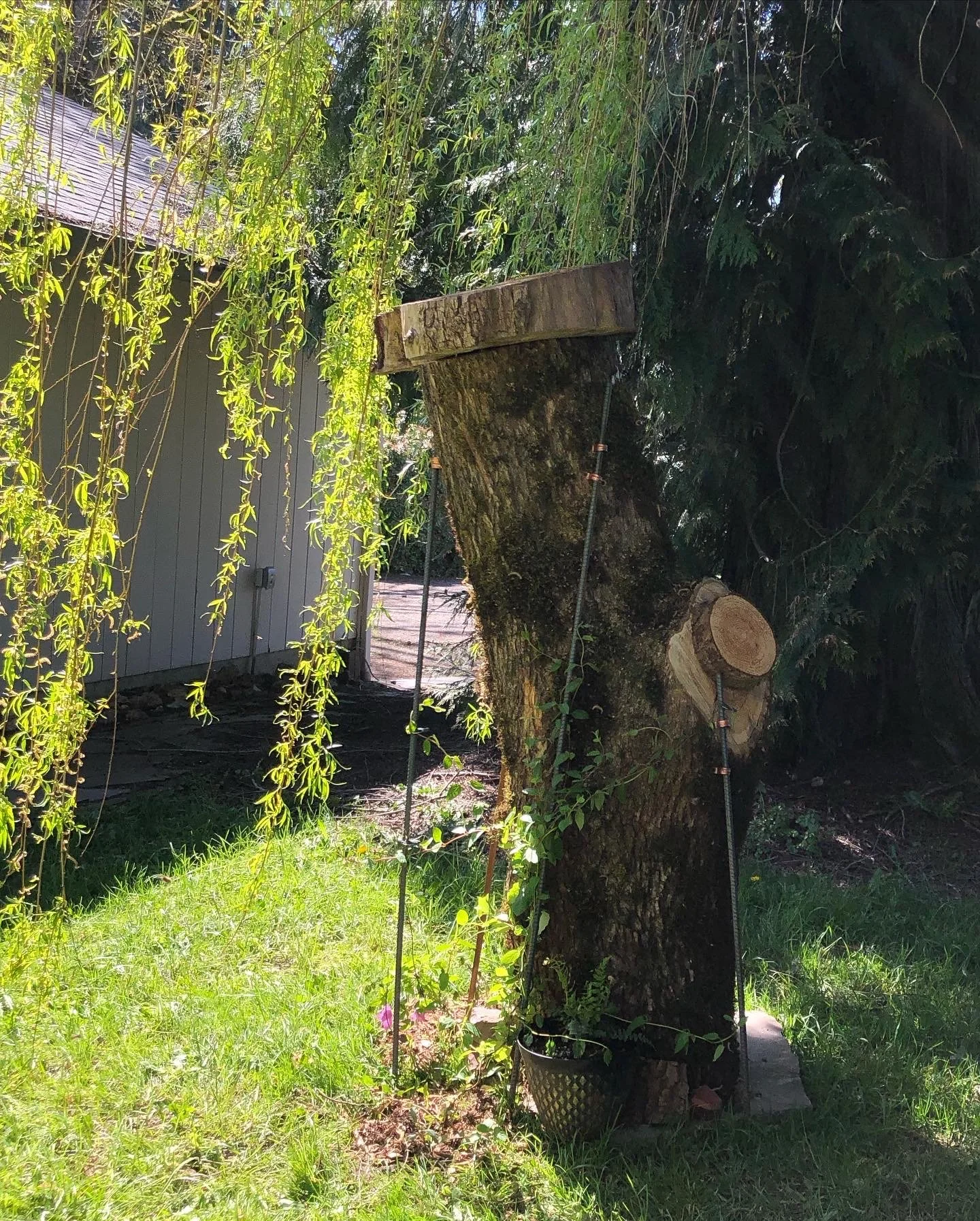
Pollinator Habitat
Pollinators are a diverse group of animals including bees, birds, and butterflies that pollinate many of our food crops and keep the landscape colorful and healthy with blooming flowers. They are unfortunately facing many factors that impact them including climate change and habitat loss. One of the best ways we can help them is by providing them with native habitats so they have an abundance of pollen and nectar to feed on.
We are thrilled to officially be a certified Pollinator Stewards through Pollinator Partnership. Over the past year, we have established a beautiful pollinator garden featuring over 18 different species of flowers. This diverse array of flora is designed to attract and support a wide variety of pollinators throughout their active seasons. In addition to the garden, we have installed several mason bee homes and carefully maintained the nesting tubes according to recommended care protocols, ensuring a healthy habitat for these efficient pollinators. We also host two wild honeybee log hives, which serve solely as natural habitats; we do not harvest honey or disturb the bees, allowing them to thrive undisturbed. Furthermore, we have added a bat house on the property to support local bat populations.
Here are some resources that can help you create your own pollinator habitat.
Top Pollinators and How to Attract Them
Pollinator-Friendly Native Plant Lists
A note on honeybees:
We love our honeybees and will always make an effort to provide habitat for them, but honeybees are not a conservation concern. It is important to focus on native bees and other pollinators.
After trying traditional beekeeping in Langstroth hives we have decided that we are more aligned with a natural way of beekeeping or in this case bee having. We want the bees to live as they do in nature without human interference and management. We do this through our log hives. This means that sometimes we will have honeybees and other times we may not. Bees naturally swarm and are susceptible to predators such as the varroa mite, wasps, hive beetles, and more.
Wild Honeybee Log Hive
Metallic Sweat Bee
Wild honeybee log hive
Honeybee in red hot poker plant
Bumblebee on Blueberry Bush
Mason Bee
Director Shannon in her bee suit
Honeybees & pollen on frame
Mason bee tubes
Mason bee cocoons
Honeybee on Queen Ann's Lace
Pollinator mural on house
Honeybee covered in pollen
Bumblebee on Lilac
Honeybees moving into log hive
















